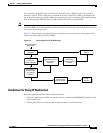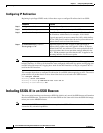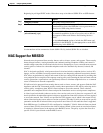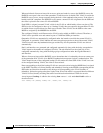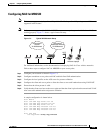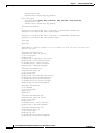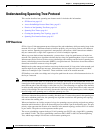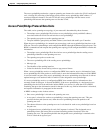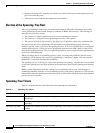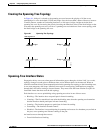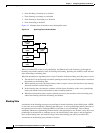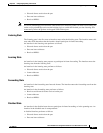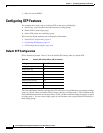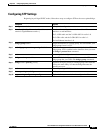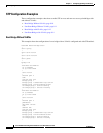
8-3
Cisco IOS Software Configuration Guide for Cisco Aironet Access Points
OL-30644-01
Chapter 8 Configuring Spanning Tree Protocol
Understanding Spanning Tree Protocol
The access point/bridge maintains a separate spanning-tree instance for each active VLAN configured
on it. A bridge ID, consisting of the bridge priority and the access point/bridge MAC address, is
associated with each instance. For each VLAN, the access point/bridge with the lowest access
point/bridge ID becomes the spanning-tree root for that VLAN.
Access Point/Bridge Protocol Data Units
The stable, active spanning-tree topology of your network is determined by these elements:
• The unique access point/bridge ID (wireless access point/bridge priority and MAC address)
associated with each VLAN on each wireless access point/bridge
• The spanning-tree path cost to the spanning-tree root
• The port identifier (port priority and MAC address) associated with each Layer 2 interface
When the access point/bridges in a network are powered up, each access point/bridge functions as the
STP root. The access point/bridges send configuration BPDUs through the Ethernet and radio ports. The
BPDUs communicate and compute the spanning-tree topology. Each configuration BPDU contains this
information:
• The unique access point/bridge ID of the wireless access point/bridge that the sending access
point/bridge identifies as the spanning-tree root
• The spanning-tree path cost to the root
• The access point/bridge ID of the sending access point/bridge
• Message age
• The identifier of the sending interface
• Values for the hello, forward delay, and max-age protocol timers
When a access point/bridge receives a configuration BPDU that contains superior information (lower
access point/bridge ID, lower path cost, and so forth), it stores the information for that port. If this BPDU
is received on the root port of the access point/bridge, the access point/bridge also forwards it with an
updated message to all attached LANs for which it is the designated access point/bridge.
If a access point/bridge receives a configuration BPDU that contains inferior information to that
currently stored for that port, it discards the BPDU. If the access point/bridge is a designated access
point/bridge for the LAN from which the inferior BPDU was received, it sends that LAN a BPDU
containing the up-to-date information stored for that port. In this way, inferior information is discarded,
and superior information is propagated on the network.
A BPDU exchange results in these actions:
• One access point/bridge is elected as the spanning-tree root.
• A root port is selected for each access point/bridge (except the spanning-tree root). This port
provides the best path (lowest cost) when the access point/bridge forwards packets to the
spanning-tree root.
• The shortest distance to the spanning-tree root is calculated for each access point/bridge based on
the path cost.
• A designated access point/bridge for each LAN segment is selected. The designated access
point/bridge incurs the lowest path cost when forwarding packets from that LAN to the
spanning-tree root. The port through which the designated access point/bridge is attached to the
LAN is called the designated port.



